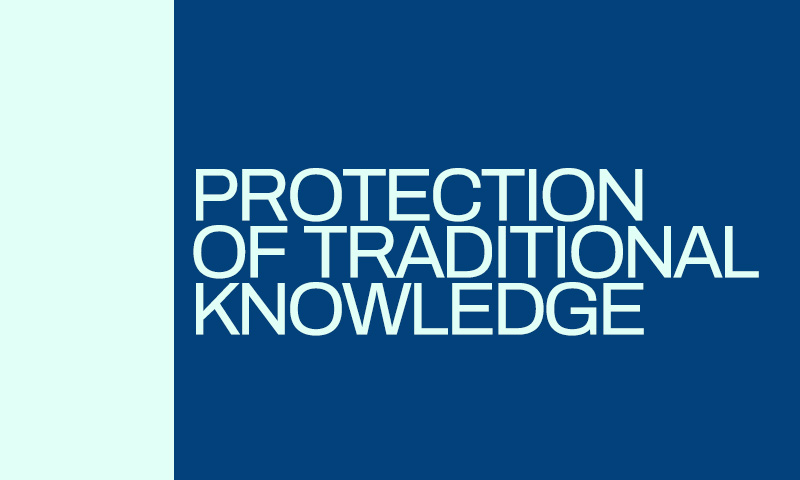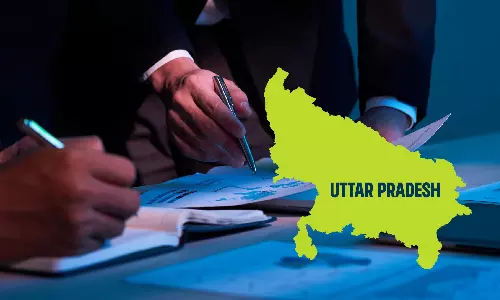
What is so enchanting yet difficult about the concept of Traditional Knowledge (TK)? Many decades have passed after the infamous conundrum created by so called patenting of three household products of India i.e. haldi, neem and basmati. The subject matter of TK still continues to be a much sought-after domain of research, however no dedicated law on TK is made yet. Why is it so?...
What is so enchanting yet difficult about the concept of Traditional Knowledge (TK)? Many decades have passed after the infamous conundrum created by so called patenting of three household products of India i.e. haldi, neem and basmati. The subject matter of TK still continues to be a much sought-after domain of research, however no dedicated law on TK is made yet. Why is it so? The universally recognized meaning of TK is, it denotes all forms of knowledge systems that originate within a given community mainly indigenous groups embodying their tradition, culture, beliefs, know-how and practices that are handed down from their ancestors-generation to generation. Hence, TK covers all that flows out of tradition, therefore rightly called traditional or tradition -based knowledge.
India is known as a land of rich TK but the irony is no special law and policy framework to address the problems of preservation, commercial misappropriation and sustainable use of TK. In the absence of a national law on TK, it is better that interested State enact their own State laws to preserve and protect their valuable TK. In a way, this approach will be much feasible. Indian State has the responsibility to preserve and protect their unique and valuable TK as the custodian of TK while clearly recognizing the ownership of TK in the local or indigenous community where it belongs. In contexts of North East India, a region of exotic tribes and culture having rich TK possessed by vast ethnic groups, a State framed law and policy on TK will be the best option. It is pertinent to mention that each tribes of North East have their own customary laws and community-based rules governing traditional cultural expressions as cultural identity of tribes are considered paramount and extra measures are taken by the indigenous tribes to protect their ethnic identity within a traditional customary regime and self-created community norms. Such customary based regime has to be duly recognized by the legal regime on TK. This is also the mandate of UN Declaration on the rights of indigenous people, 2007 voted for by India. Customary laws are not a uniform code, it varies from State to State and within State also. Any TK based legal framework must consider the diversity in customary context and leave the main charge to each community, if any indigenous community has already adopted traditional protocols related to TK, it should be supported and those who do not have should be facilitated. TK specific law must fill the existing lacunae in the current intellectual property laws for instance silence of Copyright Act on folklore, Patent give only defensive protection, Biodiversity Act is focused more on biological & genetic resources, Access and benefit sharing guidelines (post-Nagoya era) is also not exclusive to TK. The moot point is in all the IP laws as it exists TK is accorded only a secondary status as a passing reference. Best possible way to construct is to strengthened the community control, management and administration over TK. State should be providing adequate legal awareness and training about IP value of the TK and its commercial prospects.
Some of the countries with sizable population of indigenous people who are a pioneer in sui generis regime on TK are, African Regional Industrial Property Organization-Swakopmund Protocol on the Protection of Traditional Knowledge and Expressions of Folklore; China- Regulations on Protection of Traditional Chinese Medicines & Regulations on Protection of Traditional Arts and Crafts, 1997; Kenya-The Protection of Traditional Knowledge and Cultural Expressions Act, 2016; Panama-Special Intellectual Property Regime governing the Collective Rights of Indigenous Peoples for the Protection and Defense of their Cultural Identity and their Traditional Knowledge; South Africa-Protection, Promotion, Development and Management of Indigenous Knowledge, 2019; Vanuatu-The Protection of Traditional Knowledge and Cultural Expressions Act, 2016 ; Zambia-The Protection of Traditional Knowledge, Genetic Resources and Expressions of Folklore Act, 2016 and few others.
India has always been ardent proponent of protection of TK at all relevant international forums and acclaimed for creation of TKDL as a good model and doing a pioneering initiative in documentation of traditional Indian medicinal knowledge systems. Unfortunately, law makers have ignored the issue of need of special law on TK even though important amendments have been made in the national IP laws but TK received no serious consideration by the policy makers. Effort on TK legislation should have ideally started along with the inception of TKDL by the Central Govt. It is felt that State need to replicate the model of TKDL and help the community in preserving age-old TK and TCEs owned by them. This will help them to convert their oral TK in to tangible form and establish any claim of prior art or proof of origin. The fact that many GI applications from North East States are rejected due to lack of documentary historical proof of geographic origin of the product. Most of the North East region have oral history passed down by the ancestors without much written record and the prevailing IP regime relies mainly on prior art in writing. This gap can be filled with initiative like TKDL at the local level. Several tribal communities maintain their own museum of traditional heritage as a community initiative to preserve their culture and tradition, arts, crafts, folk and dances as a typical traditional knowledge library, all it needs is a balanced IPR policy base and new economic strategies related to TK. Considering that TK is a part of innumerable by-product produced by industry. Whether it is cosmetic, pharmaceutical, textile and fashion, food, agriculture, horticulture industries etc TK makes a significant contribution. Due to lack of clear law, a free riding is continuing.
In the age of internet and overpowering social media and platforms like face book, you tube and vlogs it is super easy for anyone to upload or publish materials containing TK and TCEs by anyone who accessed it. Question is how to regulate the usage of TK in digital platforms and social media? In absence of law it is difficult. It is found that many videos made on traditional cultural heritage of north east by tourist bloggers are put up for licence without the authorisation of the community who owns it and it may contain some very sacred or secret TK of indigenous people. It is far too complicated for innocent tribes to realise the loss of cultural assets in the technology ridden era. They themselves publish many audio-visual contents pertaining to TK and TCEs ignorant of its economic ramifications and IP implications.Today you tube has become a good source of income for many. This brings to the fore the essence of prior informed consent and benefit sharing for commercial use of TK in internet and other digital mediums. The traditional community laws and protocols must be adhered to in the digital use. But where is the law and watchdog to monitor such misuse? The community share TK happily with the tourist unobvious of possible dangers. They mainly see it as cultural expose to the world and take pride in it. Unregulated circulation of TK in public make it vulnerable to commercial exploitation. User terms and conditions needs to be worked out at the time of access to TK so that control over TK remain with the owners.
A decade ago Air India painted 'Tsungkotepsu', the Ao Naga traditional shawl on its aircraft's tail. A delight in red and black coloured stripes and hand painted motifs on the centre band, woven by the women of Ao Naga tribe from Nagaland. It seems no permission was taken from the Ao community nor the Air India stated in any form that the design in shawl depicted Ao tribe, benefit sharing never thought of by any. The Ao traditional shawl is a weave of folk art and culture held with immense pride. Many writers have reported about rampant instances of 'cultural plagiarism' of various Naga traditional shawls by popular online shopping sites and designers selling cheap imitations unauthorizedly. It is interesting to mention here the 'Cowichan sweater' controversy a traditional Indigenous hand knitted sweater from the Cowichan Nation, a Coast Salish nation located in what is now known as Duncan, British Columbia. Hudson's Bay Company was the merchandise partner at Vancouver 2010 Winter Olympics, they got a Chinese-made, mass produced Cowichan-style sweater, an imitation of the indigenous Cowichan sweater. HSBC and Olympic Committee was widely criticised for altering the Cowichan sweater's aesthetics, as well as for economic loss for those who created the original garments as several Cowichan family financially depended on knitting Cowichan sweater. These experiences are tell-tale in itself. At least in case of traditional medicinal knowledge's likelihood of patent, we have some recourse under the Patent law. But when it comes to cultural appropriation of these nature, there is no legal remedy whatsoever, paving way to free-for-all state of affairs. Time to act seriously and responsibly to secure TK before everything is lost.
The author is Head, Dept. of Law at Rajiv Gandhi University, Arunachal Pradesh. Views are personal




